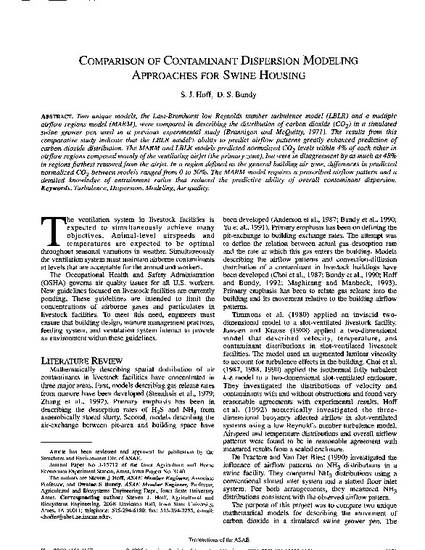
Two unique models, the Lam-Bremhorst low Reynolds number turbulence model (LBLR) and a multiple airflow regions model (MARM), were compared in describing the distribution of carbon dioxide (CO2) in a simulated swine grower pen used in a previous experimental study (Brannigan and McQuitty, 1971). The results from this comparative study indicate that the LBLR model’s ability to predict airflow patterns greatly enhanced prediction of carbon dioxide distribution. The MARM and LBLR models predicted normalized CO2 levels within 4% of each other in airflow regions composed mainly of the ventilating airjet (the primary zone), but were in disagreement by as much as 48% in regions furthest removed from the airjet. In a region defined as the general building air zone, differences in predicted normalized CO2 between models ranged from 0 to 50%. The MARM model requires a prescribed airflow pattern and a detailed knowledge of entrainment ratios that reduced the predictive ability of overall contaminant dispersion.
Available at: http://works.bepress.com/steven_hoff/93/

This article is from Transactions of the ASAE 39, no. 3 (1996): 1151–1157.